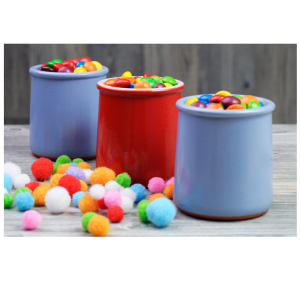
Our Theme of the Week is Equality! It’s not an easy concept for anyone to get their head around, but it’s one that even very young thinkers mull over on a regular basis. Kids notice the differences between people with ease, but they also seem to have a sense that there should be rules in place to make sure everyone gets treated the same, at least in some sense.
We’ve got an activity that is easy to set up, but that will spark some big conversations with your little thinker. Here’s how it goes:
- Without your kid(s) present, set out a series of plates or bowls. There should be one for everyone participating.
- Choose a treat that everyone likes, and put a different quantity of it in each container. Small things like jelly beans, chocolate chips or cereal puffs work really well. Anything will do, as long as it’s easily counted, and it’s something they enjoy. If you really want to stir up discussion, leave one container empty, and really vary the amounts between the rest of them.
- Cover the containers with a napkin or cloth, and invite everyone in for a snack. Tell them to lift the covers, and watch their reactions.
Yeah, they’ll notice right away that there aren’t equal numbers of treats between containers, and they’ll start questioning why. You can offer prompts with questions like:
- Is it okay that not everyone got an equal amount? Should someone get more if they’re older, hungrier, more keen on that particular treat, etc.?
- Why do you think some people got more than others? Who decided how much went into each container? Would it seem more equal if someone else decided?
- What kind of equality would you want to see? Everyone getting exactly the same thing? Everyone getting what they need? Everyone getting a chance to help divide up the treats?
- Are there different ways to be equal? What did this activity make you notice about others? What’s different between people? What do they all have in common?
At the end of the activity, everyone will have had a tasty treat, and there will be some great big discussions that will likely pop up again and again. You’ll probably find your child questioning whether other situations in their daily life promote or preclude equality. When you think they’re ready (or when they bring it up on their own), you can apply what you’ve talked about to movements toward equality in your community, your country, and throughout the world.
Happy thinking!
